Renovating
Building Components
Bag of Tricks: A Guide to Bagging Brick Walls
Bagging brick walls is an affordable alternative to render, allowing texture and a hint of history to show through
When it comes to renovating or constructing a brick home, you may not always want to leave the brick exposed or render over it. Bagging brick is a happy middle ground that covers the brick with a more consistent surface while still allowing irregularities and imperfections to show through. Named for the hessian cloth bag traditionally used to apply this mortar, here’s a guide to bagging brick.
In this Sydney, NSW, house you can clearly see the difference between exposed and bagged brick. The exposed brick wall inside the house forms a raw and industrial backdrop to the kitchen, while bagging the external wall in white creates a more sophisticated feel outside, and ties in with the neighbour’s architecture.
How does bagging differ to rendering?
Rendering is similar to bagging in that a mixture is applied to the brick’s surface. However, a rendered wall has a smoother surface finish than a bagged one, without any bumps or imperfections. Bagging, in contrast, highlights imperfections and has a textured appearance.
Find a renderer or on Houzz near you to refresh your facade
Rendering is similar to bagging in that a mixture is applied to the brick’s surface. However, a rendered wall has a smoother surface finish than a bagged one, without any bumps or imperfections. Bagging, in contrast, highlights imperfections and has a textured appearance.
Find a renderer or on Houzz near you to refresh your facade
Bagging is almost always cheaper than a full rendering project. Another advantage of bagging is that, unlike rendering, it can be accomplished by a competent homeowner.
In the family room of this Melbourne home, bagged brick walls provide texture and reflect light, making the space feel larger and brighter.
In the family room of this Melbourne home, bagged brick walls provide texture and reflect light, making the space feel larger and brighter.
What is bagging done with?
Bagging is done with a pre-mixed mortar made with cement, sand and a plasticiser, such as hydrated lime. In general, coarser sands are used for bagging and finer sands are used for rendering. Lime makes the mortar more workable and improves its ability to deal with heat and moisture once applied.
Pre-mixed mortars, with or without colour pigments, are readily available for purchase.
Bagging is done with a pre-mixed mortar made with cement, sand and a plasticiser, such as hydrated lime. In general, coarser sands are used for bagging and finer sands are used for rendering. Lime makes the mortar more workable and improves its ability to deal with heat and moisture once applied.
Pre-mixed mortars, with or without colour pigments, are readily available for purchase.
Water is added to the mix, and the amount depends on how wet or dry you want the consistency to be. More water makes for sloppy mortar (wet bagging) and a thinner application; less or even no water makes for moist mortar (dry bagging) and a thicker application.
For a new brick wall, dry bagging can be done while the mortar is drying off; wet bagging should be done once the mortar has set. Wet bagging will give more of a ‘washed’ look. Oxides can also be added to bagging mixes to produce different colours.
For a new brick wall, dry bagging can be done while the mortar is drying off; wet bagging should be done once the mortar has set. Wet bagging will give more of a ‘washed’ look. Oxides can also be added to bagging mixes to produce different colours.
How is bagging done?
The mortar is used to coat the surface of a brick wall or other construction. A variety of application methods can be used, including the traditional technique of using a hessian cloth. Alternatively, the mortar can be applied with a soft-bristle brush, a sponge, a broom, a steel trowel or a wood float.
The brick surface will need to be thoroughly cleaned prior to any bagging mixture being applied and any patching will need to be completely dry. Immediately prior to bagging, a professional will wet the wall so the bricks don’t suck all the moisture out of the mortar, then start bagging from the top to the bottom of the wall.
The mortar is used to coat the surface of a brick wall or other construction. A variety of application methods can be used, including the traditional technique of using a hessian cloth. Alternatively, the mortar can be applied with a soft-bristle brush, a sponge, a broom, a steel trowel or a wood float.
The brick surface will need to be thoroughly cleaned prior to any bagging mixture being applied and any patching will need to be completely dry. Immediately prior to bagging, a professional will wet the wall so the bricks don’t suck all the moisture out of the mortar, then start bagging from the top to the bottom of the wall.
Mortar can be applied using a hessian cloth with a circular smearing motion or using a soft-bristle brush, broom or sponge for different textures. An extra coat may be required to fill indented brick joints or for a thicker consistency.
Speak to a professional plasterer or renderer for the more technical details and application of bagging – they will also be able to provide you with a quote after inspecting your walls.
See images of bagged brick walls here on Houzz
Speak to a professional plasterer or renderer for the more technical details and application of bagging – they will also be able to provide you with a quote after inspecting your walls.
See images of bagged brick walls here on Houzz
What finishes can be achieved?
What you use to apply the mortar, whether it’s a hessian cloth, brush, broom, sponge, trowel or wood float, will influence the finish of the bagged wall. For example, a hessian cloth will give you a rougher effect, a sponge will result in a medium-textured finish, and a wood float will give you a smoother one.
What you use to apply the mortar, whether it’s a hessian cloth, brush, broom, sponge, trowel or wood float, will influence the finish of the bagged wall. For example, a hessian cloth will give you a rougher effect, a sponge will result in a medium-textured finish, and a wood float will give you a smoother one.
The motion with which the mixture is applied will also influence the final look. A circular motion will produce a circular effect, and long up-and-down strokes will produce a more linear texture. A boxed appearance can also be created by using a mixture of horizontal and vertical strokes, or a Mediterranean-inspired look can be created with a swirling motion.
Ultimately, bagging will give you a textured finish, but how much comes down to personal taste.
The extension and renovation of this 1960s house was designed by Bower Architecture. The architects chose to give the internal and external walls a bagged finish, which adds to the raw yet restrained aesthetic of the home. Up close, the bagged effect accentuates the imperfections of the brick, and provides a textural backdrop for artwork and furnishings.
Can you paint over bagging?
For coloured brick walls with a Mediterranean appearance, pigment can be mixed into the mortar. Alternatively, for a traditional painted finish, the bagged walls can be painted over with acrylic semi-gloss or low-sheen paint.
Your turn
Do you like the look of bagged brick? Tell us in the Comments below and like this story, share it and join the conversation.
More
Curious about what other effects can be achieved with brick walls? Don’t miss Building Essentials: 7 of the Best Brick Trends
For coloured brick walls with a Mediterranean appearance, pigment can be mixed into the mortar. Alternatively, for a traditional painted finish, the bagged walls can be painted over with acrylic semi-gloss or low-sheen paint.
Your turn
Do you like the look of bagged brick? Tell us in the Comments below and like this story, share it and join the conversation.
More
Curious about what other effects can be achieved with brick walls? Don’t miss Building Essentials: 7 of the Best Brick Trends
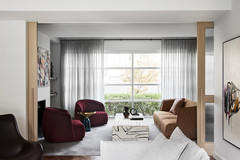





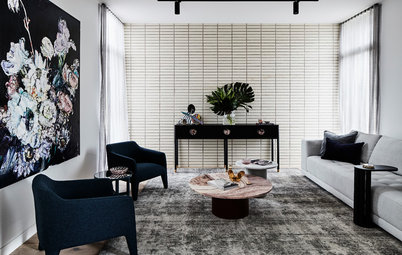
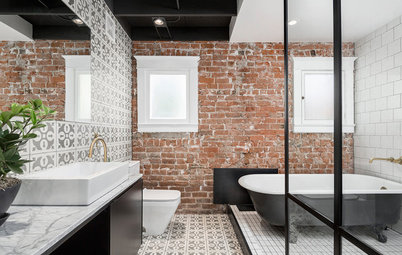
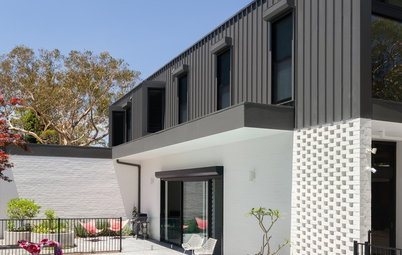
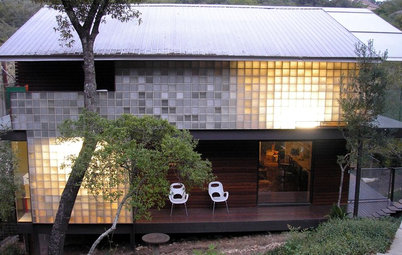
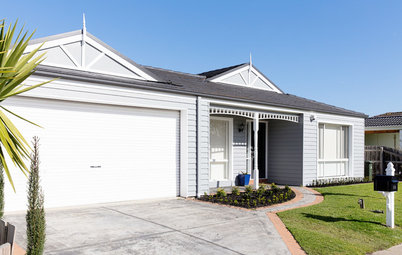
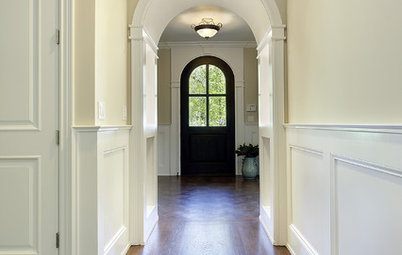
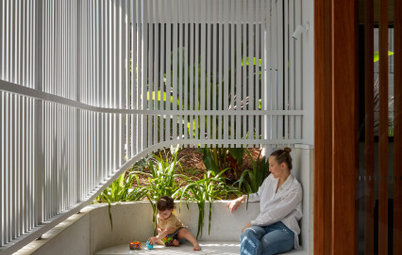

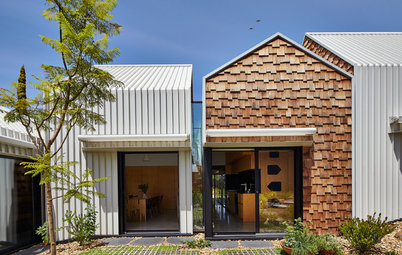
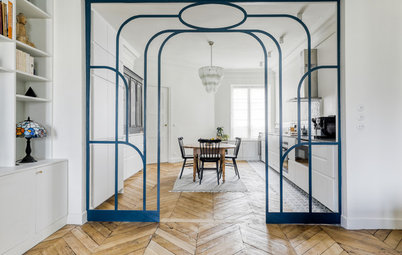

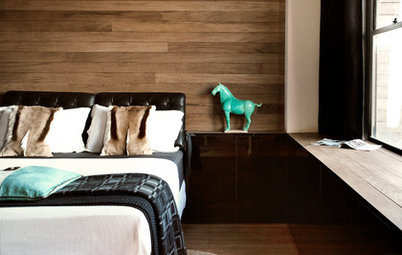
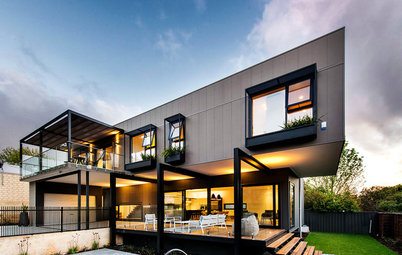
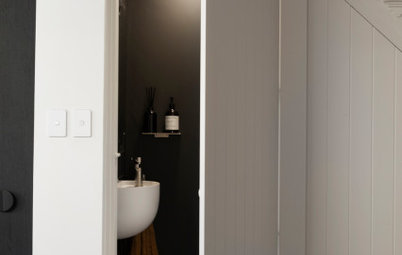
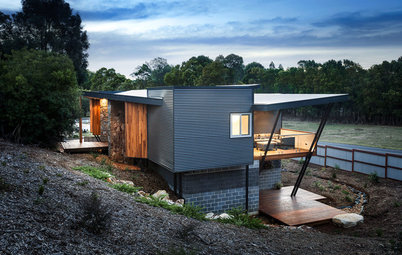
Bagging is the application of a mixture that smooths an external or internal brick wall, without concealing the irregularity and texture of the bricks.
Bagging can be done to protect the brick of a home while providing an aesthetic layer that may be left as is or painted over. In either case, the contours of the bricks and mortar joints will be clearly visible, as will any bumps and imperfections.